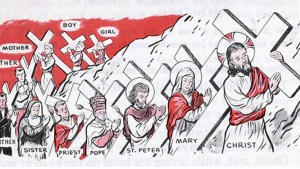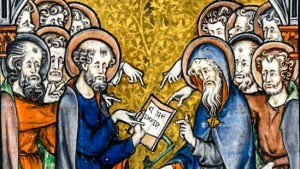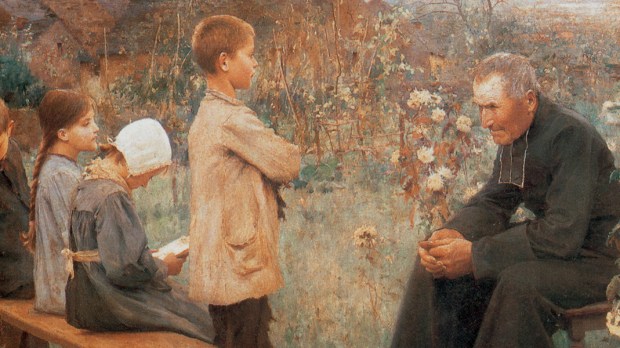Often in articles written about various teachings of the Catholic Church, an author will cite The Catechism of the Catholic Church. What is it and why does it appear to be such an important document?
Throughout the history of Christianity, various disputes have arisen questioning particular beliefs about Jesus Christ and the Church he founded. These disputes have normally been resolved through meetings between members of Church leadership. For example, the first dispute ever recorded is narrated in the Acts of the Apostles and concerns the circumcision of Gentiles who convert to Christianity (see Acts 10-11). Other disputes have involved issues such as if Jesus was divine and human, if he had human free will, and many other questions.
Early on, there was the creation of a “creed,” which clarified the beliefs of the Church. The “Apostle’s Creed” is the most well-known example of this type of synthesis.
However, over time more clarification was needed and various local “catechisms” were created to combat divergent beliefs. After the Council of Trent in the 16th century, a “Roman Catechism” was created to help priests guide the lay faithful during the Protestant Reformation, when many of the beliefs of the Catholic Church were put into question.
Additionally, local bishop conferences were free to create their own catechisms and the bishops of the United States created one in 1885 commonly known as the “Baltimore Catechism,” which was used in many parochial schools here during the early to mid 20th century.
The goal of these catechisms was never to propose new beliefs, but to clarifyteachings that were handed down over the centuries.
After the conclusion of the Second Vatican Council in 1965, it was seen that there was a need to create a new catechism that addressed the fundamental beliefs of the Catholic faith with modern terminology. St. John Paul II made the official decision to create such a document in 1985, and it was completed in 1992.
This catechism produced from that process is called The Catechism of the Catholic Church and is best described in its prologue.
This catechism aims at presenting an organic synthesis of the essential and fundamental contents of Catholic doctrine, as regards both faith and morals, in the light of the Second Vatican Council and the whole of the Church’s Tradition. Its principal sources are the Sacred Scriptures, the Fathers of the Church, the liturgy, and the Church’s Magisterium. It is intended to serve “as a point of reference for the catechisms or compendia that are composed in the various countries”.This work is intended primarily for those responsible for catechesis: first of all the bishops, as teachers of the faith and pastors of the Church. It is offered to them as an instrument in fulfilling their responsibility of teaching the People of God. Through the bishops, it is addressed to redactors of catechisms, to priests, and to catechists. It will also be useful reading for all other Christian faithful.
It remains one of the most quoted documents of the Catholic Church and is the primary reference point for all Catholic beliefs. It can pinpoint where a particular belief is found in the Bible and offers additional background from saints and other documents of the Church produced over the past 2,000 years.
The Catechism can be read in full online.

Read more:
What the Baltimore Catechism has to say to adults

Read more:
What’s the difference between the Apostles’ Creed and Nicene Creed?

